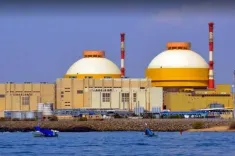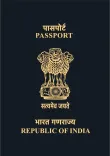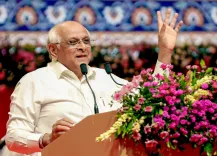What Did Shubhanshu Shukla Discover About Microalgae and Cyanobacteria on the ISS?

Synopsis
Key Takeaways
- Shubhanshu Shukla is the first Indian to conduct experiments on the ISS.
- Research focused on three microalgal species and two cyanobacteria strains.
- Microalgae could support astronauts by capturing CO2 and producing nutrients.
- Cyanobacteria may help recycle essential elements in space.
- These experiments are vital for the future of India's Gaganyaan mission.
New Delhi, July 23 (NationPress) Indian astronaut Shubhanshu Shukla carried out experiments involving three native species of microalgae and two strains of cyanobacteria aboard the International Space Station (ISS) to explore the sustainability of human existence in space, according to information shared by the Union government with the Parliament on Wednesday.
Last month, Shukla made history by becoming the first Indian astronaut to visit the ISS. He returned on July 15 after an 18-day mission filled with numerous experiments led by ISRO and various activities in the orbital laboratory.
In a formal response to the Rajya Sabha, Union Minister of State (Independent Charge) for Science and Technology, Jitendra Singh, provided insights regarding the experiments conducted on the ISS aimed at enhancing biological life support systems for future space ventures.
“Three indigenous and resilient microalgal species, namely, Chlorella sorokiniana-I, Parachlorella kessleri-I, and Dysmorphococcus globosus-HI, were tested on the ISS to analyze the effects of microgravity, CO2, and O2 levels both in space and on Earth (in a controlled lab environment),” Singh explained.
“These microalgae are capable of thriving in microgravity settings and can rapidly grow on Earth to yield valuable industrial products. In space, they can capture excess CO2 from the ISS cabin while generating essential nutrients and food supplements to sustain the astronauts' life,” the Minister highlighted.
Singh pointed out that IAF Group Captain Shukla also investigated the growth dynamics of two strains of cyanobacteria -- an Indian isolate of Spirulina and a rapidly proliferating Synechococcus strain -- under two distinct nitrogen sources, namely nitrate and urea, in a microgravity environment.
“The cyanobacteria experiment aims to showcase their capacity to recycle both carbon and nitrogen,” the Minister emphasized.
This research is a significant advancement towards creating cyanobacteria-based biological life support systems for upcoming space missions, he added.
The mission and experiments carried out by Shukla -- the youngest astronaut-select under India's Gaganyaan initiative -- are anticipated to play a crucial role in India’s human spaceflight mission scheduled for 2027.









